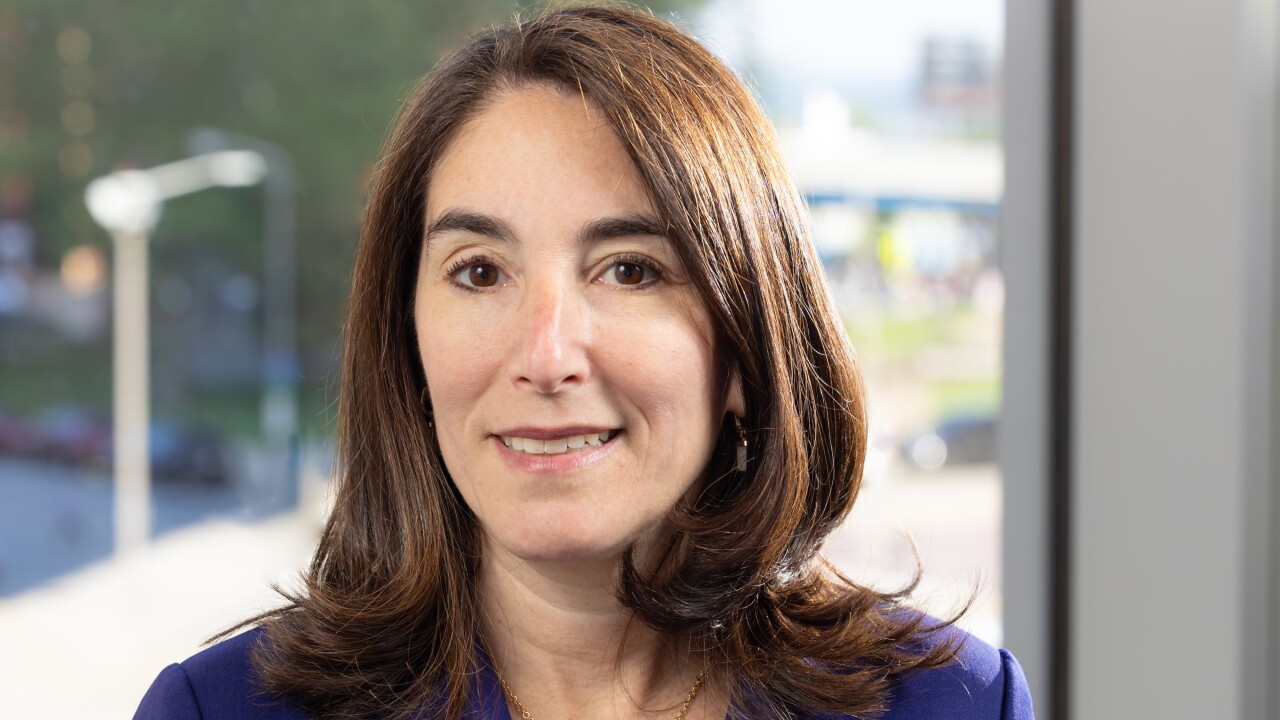WASHINGTON — One of the first priorities in KeyCorp's pursuit of First Niagara last year was to develop and execute a plan to expand the bank's portfolio of lending services and products for low- and moderate-income borrowers, Chief Executive Beth Mooney said Friday.
"This was part of our plan … even as we were finalizing the work to put in a bid and hopefully be the successful acquirer" of the Buffalo, N.Y., company, Mooney said in an interview with American Banker. "This was core to the plan on how to proceed."
Mooney's comments came moments after she signed an agreement with the National Community Reinvestment Coalition under which the Cleveland-based KeyCorp would commit $16.5 billion in lending to low- and moderate-income communities in several states in the Midwest, West and Northeast where KeyBank and First Niagara operate, beginning in 2017.
- New York
KeyBank, a $93 billion-asset bank headquartered in Cleveland, announced plans Friday to direct $16.5 billion in lending toward low- and moderate-income communities over five years beginning in 2017.
March 18 -
Despite the rise of digital banking, most people still look to physical channels when opening accounts. That's partly due to consumer preference, but banks have a long way to go to make the digital sales experience smooth.
February 17 -
Banks can help ease a severe national shortage in affordable rental properties and make money doing it.
January 3
The deal, termed a "community benefits agreement," would commit the $93 billion-asset KeyBank bank to double its lending to low- and middle-income borrowers; add $600 million in small-business lending; expand its community development lending by $4.5 billion; and add $175 million in philanthropic activities. The deal also stipulated that four branches that KeyBank had been considering consolidating near low- and middle-income communities will remain open and an additional branch will be opened in East Buffalo, N.Y. Key will also cease financing and wind down its relationship with the payday lender CASH America "as quickly as reasonably possible" as part of the deal.
Bruce Murphy, executive vice president and head of corporate responsibility at KeyBank, added that if Key had attempted to acquire the $40 billion-asset First Niagara without making any attempt to engage the community groups, they would not have been successful.
"The fact of the matter is, we believe we could not get to the end game without having a very clear engagement with the community," Murphy said. "We have no interest in going through public hearings. You lose — there's nothing you can win in a public hearing."
NCRC President and Chief Executive John Taylor praised KeyBank for its proactive approach to engaging community groups as part of the acquisition process. Although regulators were not involved in brokering the deal — their consideration of the application is entirely separate — Taylor said he believes they will evaluate it as part of the application and make the process easier.
"To the credit of KeyBank, they did it right," Taylor said. "I think what it's going to do is create more of a smooth sail. I think what it's going to mean is regulators, particularly the OCC, are going to look at this and say, 'OK, these guys really listened, the community seems satisfied that they were responsive.' "
The deal for First Niagara must still be approved by the Office of the Comptroller of the Currency and the Federal Reserve. It has been viewed skeptically by Sen. Charles Schumer, D-N.Y., and some consumer groups — but the agreement with the NCRC could put those fears to rest.
Mooney said the agreement isn't just about the acquisition with First Niagara; it's also a big part of KeyCorp's strategy.
"We have always believed it's good business," Mooney said. "This is good business."
Murphy said the presumption that low- to middle-income community loans will not generate returns is not necessarily accurate and it is Key's obligation as a lender to try to make those loans perform.
"There's oftentimes an operating assumption that these communities are low wealth and high risk," Murphy said. "It causes people in the beginning to not fully investigate whether these communities can generate returns. We think about, How do we make that equation work?"
Mooney and Taylor both said the bank initially made an offer of $12 billion, and that after months of bargaining between the two groups, they arrived at the $16.5 billion figure.
In addition to the level of lending commitments, the bank and the NCRC also were stuck in negotiations over how to direct the investment — whether through community investment development groups or other responsible nonprofit groups, for example, Murphy said.
"Not-for-profits who will help people improve their credit. Not-for-profits who will do homebuyer education. Not-for-profits who will do the kinds of things that can stabilize a person and/or family," Murphy said, referring to some aspects of the negotiations. "Some of the back-and-forth is, so how do you execute? So it's not about whether I agree that that's a necessary thing to do, it's about the 'how' and the capability of those who deliver. We don't write a check and walk away."
Mooney agreed that was a crucial part of the discussion.
"I do think a part of what took the nights and the long weekends is how you get there," Mooney said. "It's not just what you agree to do, it's how does it come to life, and we wanted to make sure we all went the distance because … the quality of the outcomes and the quality of the understanding is the clarity about the how, not just the what."





